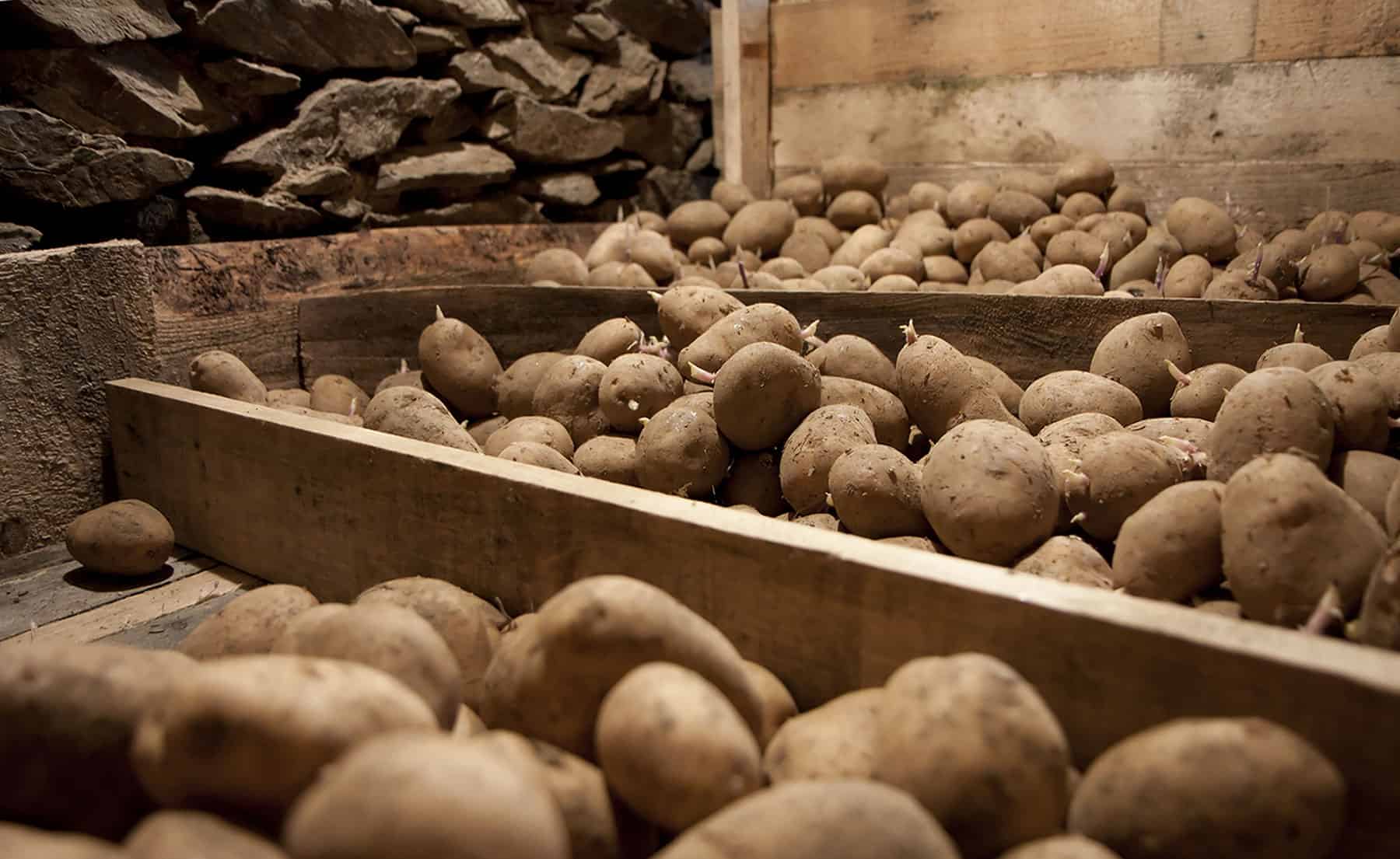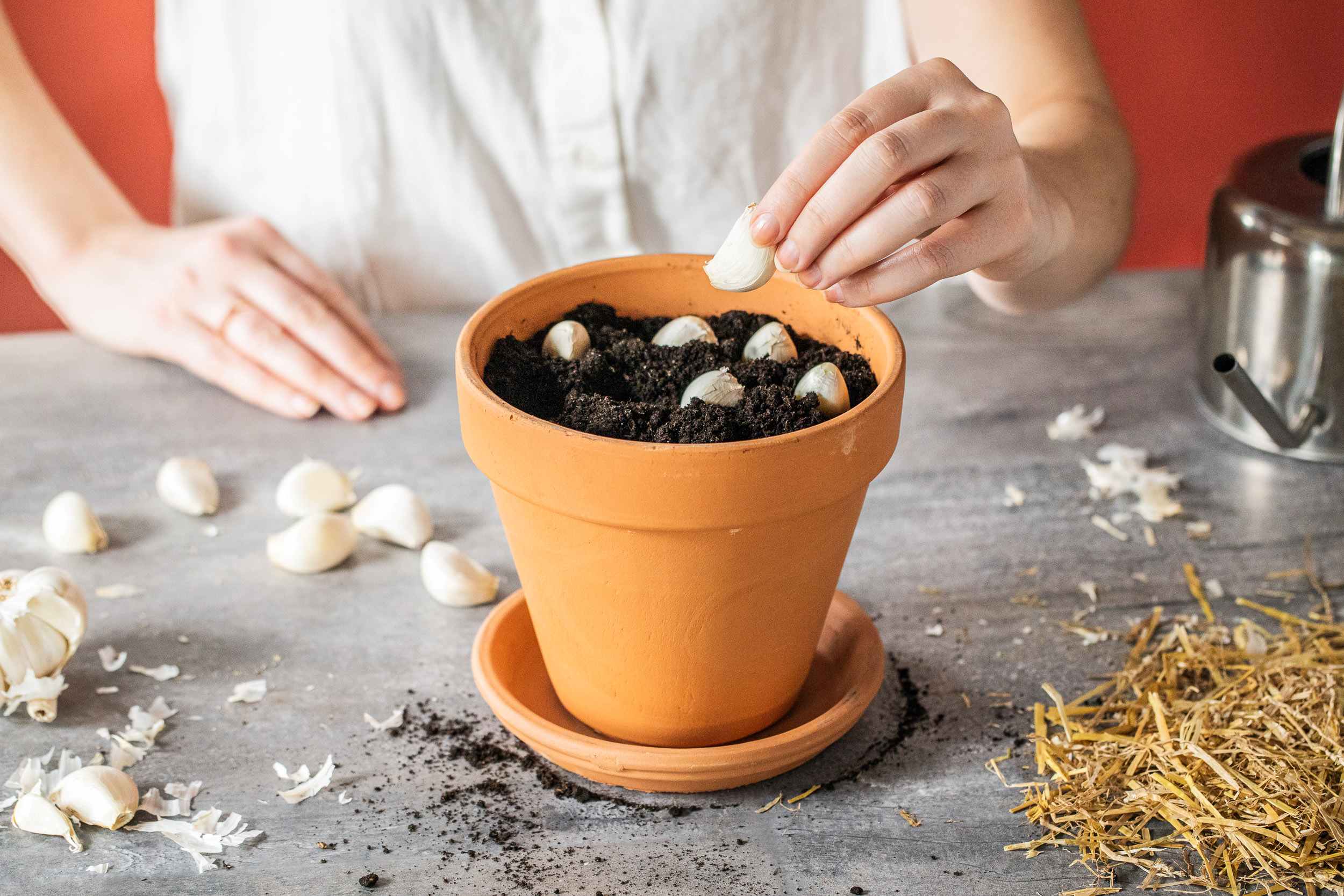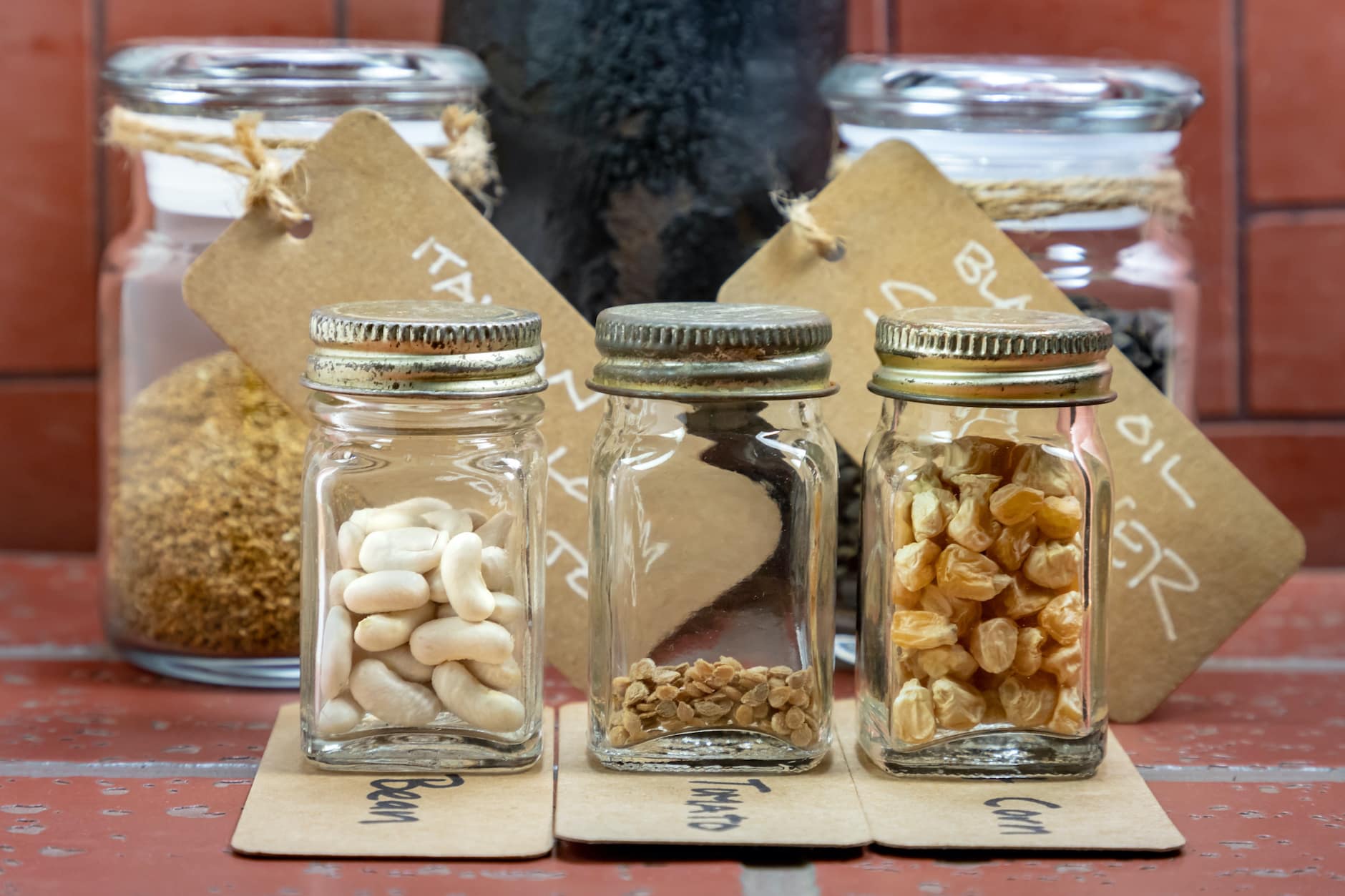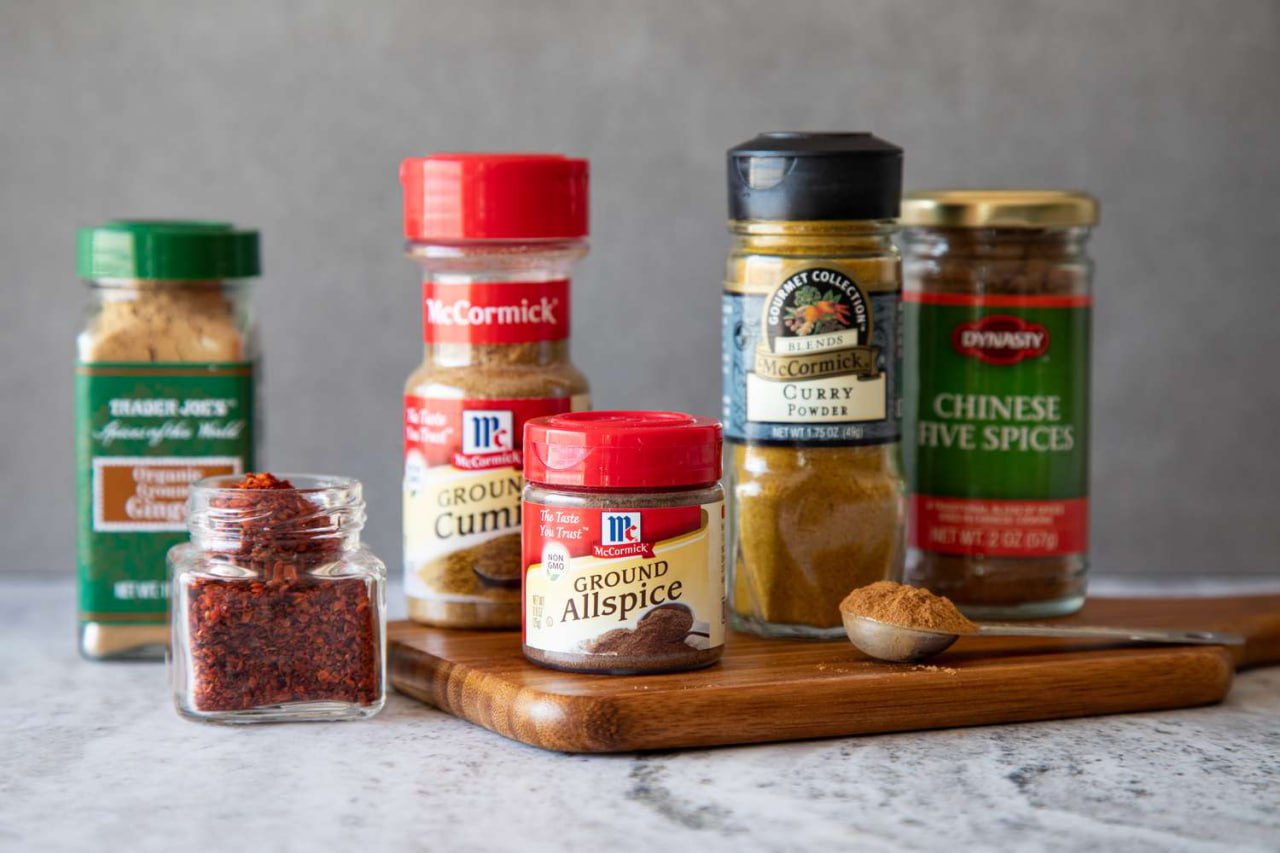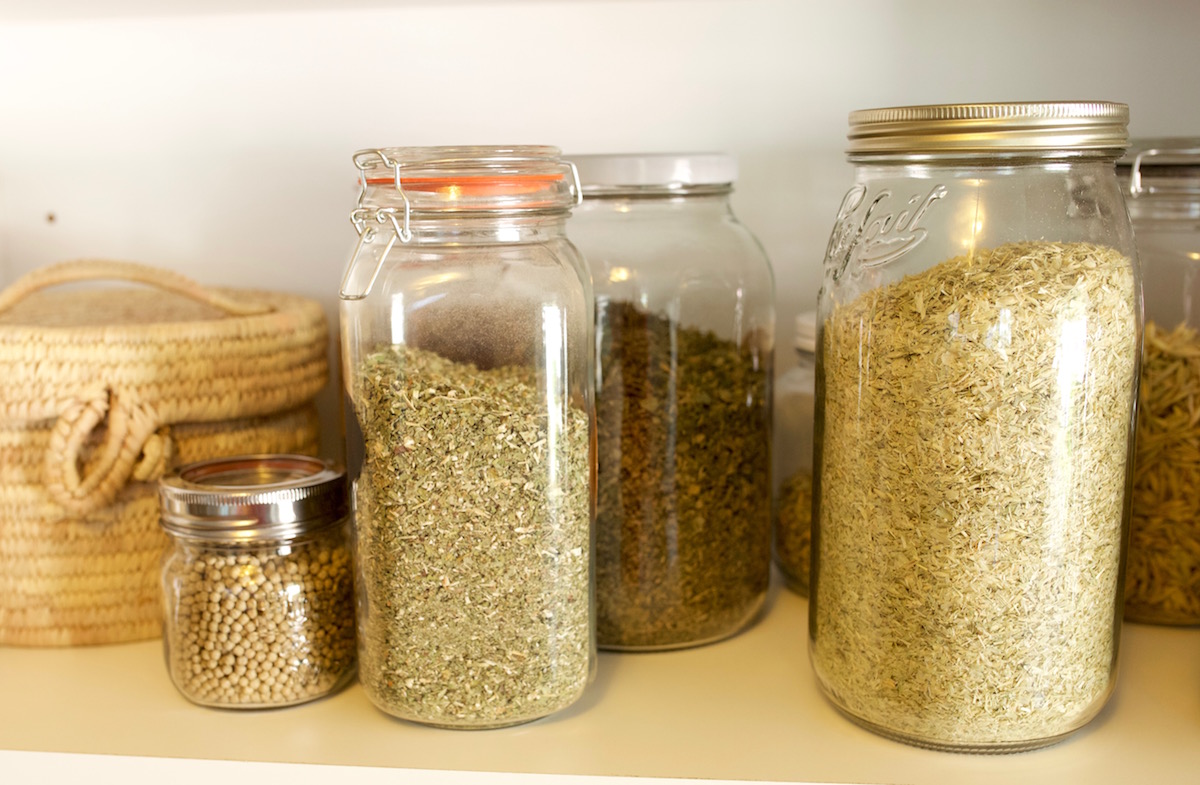Home>Gardening Basics>Understanding Soil>How To Store Potting Soil


Understanding Soil
How To Store Potting Soil
Published: February 8, 2024
Learn how to store potting soil and ensure its longevity. Gain a better understanding of soil and discover tips for proper storage.
(Many of the links in this article redirect to a specific reviewed product. Your purchase of these products through affiliate links helps to generate commission for Chicagolandgardening.com, at no extra cost. Learn more)
Table of Contents
- Introduction
- Importance of Properly Storing Potting Soil
- Step 1: Choosing the Right Container
- Step 2: Preparing the Storage Area
- Step 3: Cleaning the Container
- Step 4: Transferring the Potting Soil
- Step 5: Adding Moisture Control Agents (Optional)
- Step 6: Sealing the Container
- Step 7: Storing the Potting Soil
- Step 8: Monitoring the Soil Quality
- Conclusion
Introduction
When it comes to gardening, the quality of your soil can have a significant impact on the health and success of your plants. That’s why it’s so important to properly store potting soil to ensure it remains in optimal condition for future use. By taking the time to store your potting soil correctly, you can extend its shelf life, prevent it from becoming contaminated, and provide your plants with the best possible growing medium.
Properly storing potting soil involves a series of steps, from choosing the right container to monitoring the soil quality over time. It may seem like a simple task, but if done incorrectly, it can lead to wasted time, effort, and money. In this article, we will guide you through the process of storing potting soil effectively, ensuring that it stays fresh and ready for use when you need it next.
Whether you have leftover potting soil from previous gardening projects or you have bought it in bulk for future use, following these steps will help maintain its quality and ensure optimal plant growth. So let’s dive in and discover how you can properly store potting soil.
Importance of Properly Storing Potting Soil
Properly storing potting soil is essential for maintaining its quality and ensuring its suitability for future gardening projects. Here’s why it’s important to take the time and effort to store your potting soil correctly:
- Preserve Nutrient Content: Potting soil is formulated to provide essential nutrients to plants. By storing it properly, you can prevent nutrient loss and ensure that the soil remains rich in the necessary elements your plants need to thrive.
- Prevent Contamination: Storing potting soil correctly helps to prevent contamination by pests, weeds, and diseases. Proper storage practices, such as sealing the container and keeping it in a clean and dry area, can minimize the risk of introducing harmful organisms into the soil.
- Extend Shelf Life: Potting soil, like any organic matter, has a limited shelf life. However, by storing it properly, you can extend its usability and effectiveness. This means you can make the most of your investment by using the stored potting soil for future gardening projects.
- Save Money: Buying potting soil can be costly, especially if you have a large garden or multiple plant containers. By properly storing and reusing potting soil, you can save money in the long run by reducing the need to purchase new soil for every planting season.
- Convenience: Having a supply of properly stored potting soil readily available allows you to start new gardening projects without delay. You won’t have to make last-minute trips to the garden center to buy soil or worry about the quality of soil available at the store.
Overall, properly storing potting soil is crucial for maintaining its quality, ensuring the health of your plants, and maximizing your gardening efforts. By following the steps outlined in this article, you can enjoy the benefits of fresh and nutrient-rich soil whenever you need it, making your gardening experience more successful and enjoyable.
Step 1: Choosing the Right Container
When it comes to storing potting soil, choosing the right container is crucial for maintaining its quality and usability. Here are some factors to consider when selecting a container:
- Size: Choose a container that is large enough to hold the amount of potting soil you want to store. Consider the volume of soil you typically use in your gardening projects and select a container that can accommodate it.
- Durability: Opt for a container that is made of sturdy materials, such as plastic or metal, to ensure it can withstand extended periods of storage without deteriorating. Avoid containers that may break, crack, or degrade over time.
- Airtight: It’s crucial to choose a container that can be sealed tightly to prevent moisture and air from entering. This will help maintain the moisture content and quality of the potting soil, ensuring its long-term usability.
- Opaque: Select a container that is opaque or dark in color. This will help prevent sunlight from reaching the stored potting soil, as exposure to sunlight can lead to the growth of algae, mold, or other harmful organisms.
- Easy to Handle: Consider the practicality of the container. Choose one that is easy to handle and move around, especially if you plan to store the potting soil in a specific area or need to transport it to different locations.
Some suitable containers for storing potting soil include plastic storage bins, buckets with lids, and metal cans with secure closures. Avoid using containers that were previously used to store chemicals or other potentially harmful substances, as residues can contaminate the potting soil.
Remember, choosing the right container is the first step in properly storing potting soil. By selecting a container that meets the criteria mentioned above, you can ensure that your potting soil remains fresh, free from contaminants, and ready for your future gardening endeavors.
Step 2: Preparing the Storage Area
Once you have chosen the right container for storing your potting soil, it’s important to prepare the storage area to ensure optimal conditions for the soil. Here are the key steps in preparing the storage area:
- Clean the Area: Start by cleaning the area where you plan to store the potting soil container. Remove any debris, dust, or potential sources of contamination to create a clean and safe environment for storing the soil.
- Choose a Cool and Dry Location: Find a cool and dry location for the storage area. Avoid areas that are exposed to direct sunlight, as excessive heat can degrade the quality of the potting soil. Additionally, keep the area away from excessive moisture, as damp conditions can lead to mold or bacterial growth.
- Provide Adequate Ventilation: While it’s important to keep the potting soil container sealed to minimize moisture and air entry, it’s also crucial to ensure adequate ventilation in the storage area. This will help prevent the accumulation of condensation and maintain a good airflow, reducing the risk of fungal growth.
- Protect from Pests and Rodents: Take measures to protect the potting soil from pests and rodents. Ensure that the storage area is fully enclosed and secure. Consider using pest deterrents, such as mothballs or natural repellents, to avoid any unwanted visitors that might damage the soil.
- Avoid Extreme Temperatures: Extreme temperatures can have a detrimental effect on potting soil. Avoid storing the container in areas prone to freezing or excessively hot temperatures, as this can impact the integrity and effectiveness of the soil.
By following these steps and preparing the storage area properly, you can create an ideal environment for storing potting soil. This will help maintain the quality and usefulness of the soil, ensuring that it remains in optimal condition until you’re ready to use it for your gardening projects.
Step 3: Cleaning the Container
Before transferring the potting soil into the selected container, it’s essential to ensure that the container is clean and free from any contaminants that could potentially affect the quality of the soil. Here’s how you can clean the container effectively:
- Empty the Container: If the container was previously used to store any substances or materials, make sure to empty it completely. Remove any remaining residue or debris from the container before proceeding with the cleaning process.
- Wash with Soap and Water: Use a gentle soap or dishwashing detergent and warm water to clean the container thoroughly. Scrub the interior and exterior surfaces of the container, including the lid or closure, to remove any dirt, grime, or potential contaminants. Rinse the container with clean water to remove any soap residue.
- Sanitize if Necessary: If you suspect that the container may have harmful bacteria or fungi, consider sanitizing it to eliminate any potential pathogens. You can use a solution of diluted bleach (1 part bleach to 9 parts water) or a household disinfectant, following the manufacturer’s instructions. Rinse the container thoroughly after sanitizing.
- Allow to Dry: After cleaning and sanitizing, let the container air dry completely. Ensure that the container is free from moisture before transferring the potting soil into it. Moisture trapped in the container can lead to mold or bacterial growth, which can then affect the quality of the stored soil.
Cleaning the container is a crucial step in ensuring the long-term storage of potting soil. By thoroughly cleaning and sanitizing the container, you can remove any potential contaminants and create a clean and safe environment for the soil. This will help maintain the integrity and quality of the potting soil, ensuring that it remains suitable for your gardening needs.
Step 4: Transferring the Potting Soil
Once you have prepared the container and cleaned it thoroughly, it’s time to transfer the potting soil into it. Follow these steps to ensure a seamless and efficient transfer:
- Gather the Necessary Tools: Before transferring the potting soil, gather the necessary tools, such as a scoop or trowel, to make the process easier and more precise.
- Work in a Clean Area: Choose a clean and clutter-free area for transferring the soil. This will help prevent any accidental contamination or spills during the transfer process.
- Open the Bag or Container: If the potting soil is in a bag or another container, carefully open it and ensure that there are no signs of moisture or mold. If any abnormalities are detected, consider discarding the soil and obtaining fresh potting soil.
- Scoop and Transfer: Use the scoop or trowel to transfer the potting soil into the clean container. Take care to distribute the soil evenly and fill the container without packing it too tightly. Leave some headspace at the top to allow for proper sealing.
- Avoid Contamination: During the transfer process, avoid cross-contamination by avoiding contact with the soil using dirty tools or hands. If necessary, wash or sanitize the tools before transferring more soil, especially if you are working with different batches of potting soil.
- Level the Surface: Once the potting soil is transferred, use the scoop or a gardening tool to level the surface of the soil in the container. This helps ensure even distribution, making it easier to work with the soil when you are ready to use it.
By following these steps, you can transfer the potting soil into the clean container efficiently and without introducing any contaminants. Remember to work carefully to avoid spills or soil waste. With the soil safely transferred, you are now ready to proceed to the next step in storing potting soil.
Step 5: Adding Moisture Control Agents (Optional)
While not necessary for all potting soil storage scenarios, adding moisture control agents can help maintain the ideal moisture level within the stored soil. This step is especially beneficial if you live in a humid climate or if the potting soil tends to dry out quickly. Here’s how you can add moisture control agents to your potting soil:
- Choose the Right Moisture Control Agent: There are various moisture control agents available, such as vermiculite, perlite, or water-absorbing crystals. Choose the one that best suits your needs and is compatible with the type of plants you are growing.
- Follow the Instructions: Read and follow the instructions on the packaging of the moisture control agent you have chosen. Each product may have specific guidelines on the quantity and method of application.
- Mix Thoroughly: If instructed, mix the moisture control agent into the potting soil thoroughly. Ensure an even distribution of the agent throughout the soil to achieve the desired moisture retention properties.
- Monitor Moisture Levels: After adding the moisture control agent, monitor the moisture levels in the stored potting soil regularly. Avoid overwatering or letting the soil become excessively dry. Adjust the watering accordingly to maintain the optimal moisture balance.
Adding moisture control agents can provide a valuable benefit by helping to regulate the moisture levels in the stored potting soil. It can prevent issues like waterlogging or excessive drying, which can negatively impact the health of your plants when you eventually use the soil.
Remember, the addition of moisture control agents is optional and may not be necessary for all potting soil storage situations. Consider your specific needs and the typical moisture requirements of the plants you will be using the soil for before deciding whether to incorporate this step into your storage process.
Step 6: Sealing the Container
Sealing the container is a crucial step in properly storing potting soil. It helps maintain the quality and freshness of the soil by preventing moisture and air from entering, which can lead to mold, fungal growth, and degradation of the soil. Follow these steps to effectively seal the container:
- Clean the Rim: Ensure that the rim or edges of the container are clean and free from any soil or debris. Wipe them with a clean cloth or paper towel to remove any potential contaminants.
- Secure the Lid or Closure: Place the lid or closure securely on the container. Double-check to ensure that it fits properly and forms a tight seal. If the container does not have a lid, consider using a layer of plastic wrap or an airtight cover to seal the opening.
- Use Sealant (Optional): If you want an extra layer of protection, you can use a food-grade sealant or silicone caulk to seal any small gaps or openings in the container. This will further prevent moisture and air from entering and compromising the quality of the potting soil.
- Label the Container: It’s important to label the container with the date of storage and any other relevant information. This will help you keep track of the age of the soil and ensure that you use the oldest soil first, keeping it organized and efficient.
- Store in an Upright Position: Finally, store the sealed container in an upright position. This will prevent soil from settling unevenly and help maintain its consistency. Avoid stacking heavy objects on top of the container, as this can compromise the seal and potentially damage the soil.
By sealing the container effectively, you can preserve the quality and freshness of the potting soil for an extended period. This will ensure that it remains in optimal condition and ready for use in your future gardening projects.
Remember to check the seal periodically to ensure it remains intact. If you notice any signs of damage or a broken seal, address the issue immediately by resealing the container or transferring the soil to a new, properly sealed container.
Step 7: Storing the Potting Soil
Now that the potting soil is properly prepared and sealed in a container, it’s time to store it in a suitable location. Following these guidelines will help ensure the optimal storage of your potting soil:
- Cool and Dry Area: Choose a cool and dry area for storing the potting soil. Excessive heat and moisture can degrade the quality of the soil over time. Avoid storing the container in areas exposed to direct sunlight, as this can also affect the soil’s integrity.
- Elevated Surface: Place the container on an elevated surface, such as a shelf or a pallet, to protect it from potential moisture or pest damage from the ground. This will also help with airflow around the container, reducing the risk of mold or mildew formation.
- Secure Location: Ensure that the storage area is secure and protected from potential pests or rodents. Keep the area clean and free from debris to minimize the risk of contamination.
- Organize and Rotate: If you have multiple containers of stored potting soil, organize them by date or batch. Use the oldest soil first to ensure that it gets utilized before fresher soil. This practice helps maintain a consistent supply of fresh soil for your gardening needs.
- Monitor Temperature and Humidity: Regularly check the storage area for temperature and humidity levels. Extreme temperature fluctuations or high humidity can negatively affect the quality of the potting soil. Ensure that the storage area remains within the recommended range for soil preservation.
- Avoid Overstacking: It’s important to avoid overstacking containers or placing heavy objects on top of them. Excessive weight can compromise the integrity of the container and lead to soil compaction or damage.
By following these storage recommendations, you can ensure that your potting soil remains fresh and ready for use when you need it. Maintain a clean and well-organized storage area to help prolong the shelf life and usability of the soil, ultimately leading to successful gardening endeavors.
Step 8: Monitoring the Soil Quality
While your potting soil is safely stored, it’s essential to periodically monitor its quality to ensure it remains suitable for use. Regular monitoring will help you identify any potential issues and take corrective actions. Follow these steps to effectively monitor the quality of your stored potting soil:
- Visual Inspection: Regularly inspect the stored potting soil for any signs of mold, fungal growth, or pest infestation. Look for any unusual discoloration, odor, or texture that might indicate a problem.
- Moisture Assessment: Check the moisture level in the potting soil by touching it with clean hands or using a moisture meter. The soil should be slightly moist but not overly wet or dry. Adjust watering if necessary to maintain the proper moisture balance.
- Texture Evaluation: Assess the texture of the soil to ensure it remains loose and well-draining. Over time, potting soil can compact or become clumpy, affecting its ability to provide adequate aeration and water drainage. Gently fluff the soil if needed.
- Smell Check: Pay attention to any unusual or foul odors coming from the stored potting soil. Foul smells can indicate the presence of rot or decay, and it may be necessary to discard the soil if the problem persists.
- Record Keeping: Keep a record of the monitoring process, noting any observations or changes in the soil’s quality. This information will help you track the soil’s condition over time and make informed decisions regarding its suitability for use.
- Proper Storage and Handling: Ensure that you are storing and handling the potting soil correctly. Follow the steps outlined in this article and make any necessary adjustments if you notice problems arising. A simple adjustment in storage conditions may help maintain the quality of the soil.
By monitoring the quality of your stored potting soil, you can address any issues promptly and ensure that it remains in optimal condition. Proper monitoring will enable you to take appropriate actions, such as adjusting moisture levels, aerating the soil, or discarding any soil that has become compromised.
Remember that well-maintained and monitored potting soil will provide the best growing environment for your plants. Regular checks will help you catch any potential problems and ensure that the soil is ready to support healthy plant growth when you’re ready to use it.
Conclusion
Properly storing potting soil is essential for maintaining its quality and ensuring successful gardening endeavors. By following the steps outlined in this article, you can extend the shelf life of your potting soil, prevent contamination, and provide an optimal growing medium for your plants.
Choosing the right container, preparing the storage area, cleaning the container, and transferring the potting soil are crucial initial steps. Adding moisture control agents can help regulate moisture levels, while sealing the container effectively ensures the soil remains protected from moisture and air. Storing the potting soil in a cool and dry area, monitoring its quality periodically, and making necessary adjustments help maintain its freshness and suitability for future use.
By properly storing potting soil, you can preserve its nutrient content, prevent contamination, save money, and enjoy the convenience of having a readily available supply of quality soil. Not only does it benefit your plants, but it also contributes to a more sustainable and efficient gardening practice.
Remember to always prioritize cleanliness, check for signs of mold or pests, and maintain an organized storage system. By dedicating time and effort to properly store your potting soil, you can ensure that it remains in optimal condition for your gardening endeavors, providing a solid foundation for healthy plant growth.
